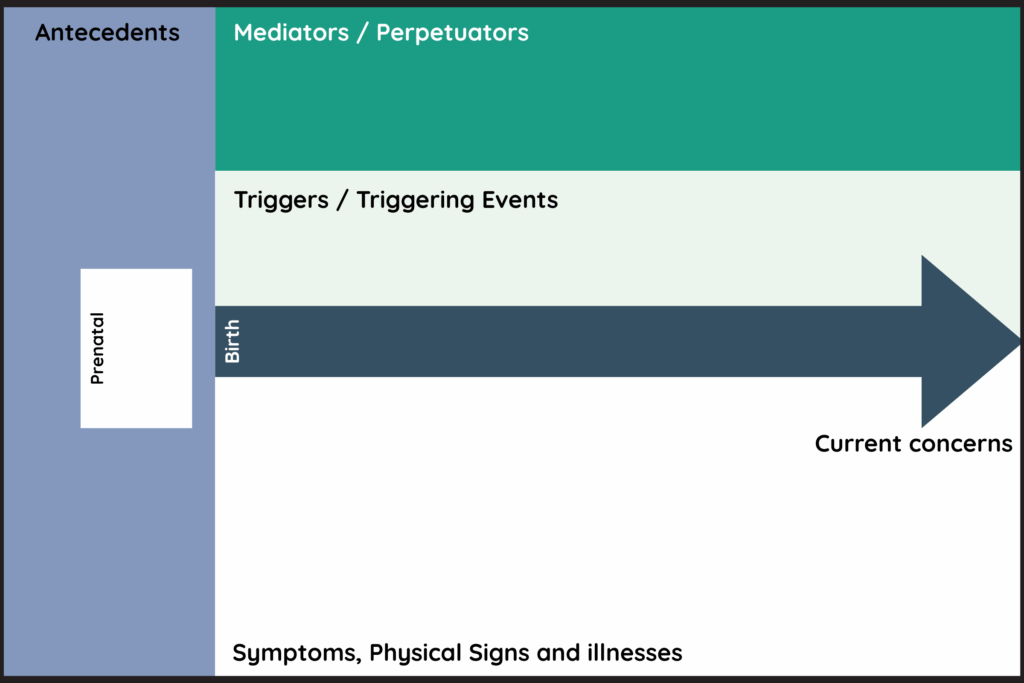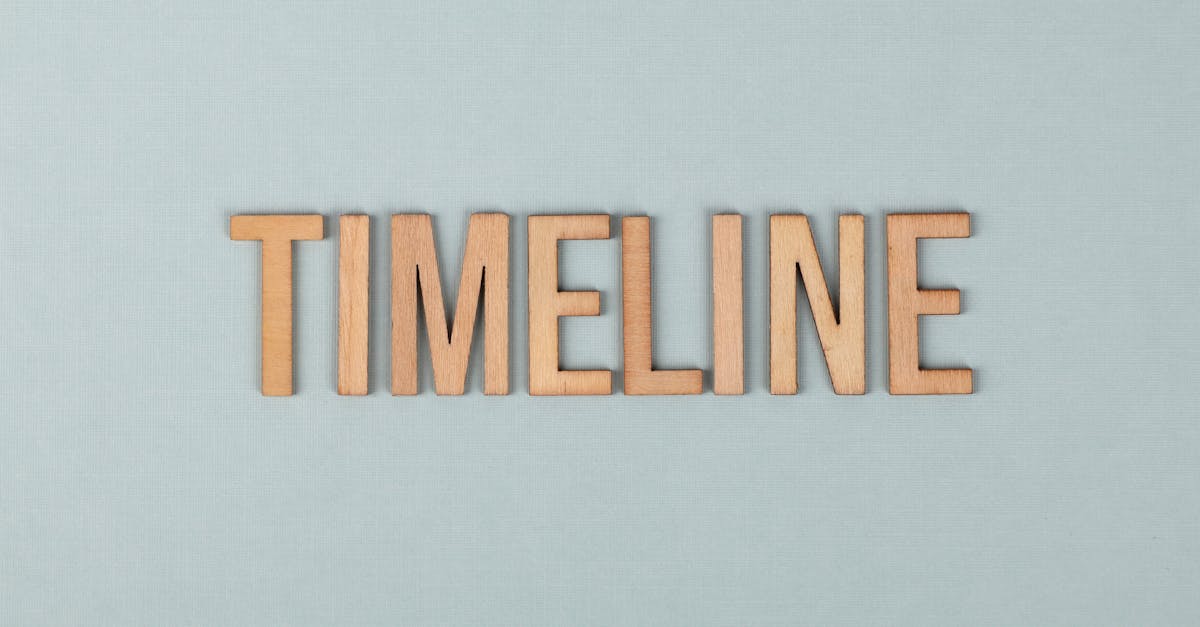When did things start to slide? Map it. See patterns. Make changes.
What is the Sunday Reset
I’ve recently completed my Applying Functional Medicine in Clinical Practice (AFMCP) course from the Institute for Functional Medicine. Each week I’m taking one core concept, explaining it in plain English, and give you a small step you implement to improve your health. The goal is simple: help you move from surviving to thriving with practical changes that stick. This week we’re introducing a tool used by every functional-medicine practitioner: the Functional Medicine Timeline.
Why this matters to me
The Timeline helped me make sense of my own story. I was a C-section baby. I had childhood eczema that settled when I moved from cow’s milk to goat’s milk. I had lots of ear infections and several courses of antibiotics. Years later, as a junior doctor on shifts, my sleep broke, stress rose, and I grazed through the night on carb-heavy, gluten-containing snacks. That period was the real trigger. The mediators were continuous gluten exposure and very little exercise.
Looking at it on one page, I could see a pattern: a microbiome under strain (antibiotics and diet), a tendency towards inflammatory flares, and a cluster of lifestyle factors that left me feeling awful. The plan followed naturally: remove gluten, add probiotics and fermented foods, protect sleep, practise meditation and other stress tools, and move more. The Timeline made the analysis easy and the order of actions clear.
What is the Functional Medicine Timeline?
Here is an example of a functional medicine timeline (if you want a PDF version drop me an email by clicking here with the subject line ‘Timeline’ and I’ll send one over):

- Left column — Antecedents. This is where you note background factors that raise risk (birth details, early feeding, antibiotics, toxins, long stress). The small white Prenatal box sits here for anything before birth.
- Top band — Mediators / Perpetuators. List the things that keep issues going now (poor sleep, ultra-processed food, alcohol, low movement, late screens, ongoing exposures).
- Middle band — Triggers / Triggering Events. Place the key “since then I’ve not been the same” moments along this arrow (infection, shift work, house move with damp, medication change, bereavement).
- Bottom area — Symptoms, Physical Signs and illnesses. Under each trigger, note what showed up afterwards (bloating, joint pain, crashes, diagnoses). On the far right, under the arrow head, write your Current concerns.
It’s quick to sketch. Most people can draft the first version in 20-30 minutes. Start simple and capture the most important things, you can always go back and fill it in with more detail later.
Examples of ATMs
Antecedents (set the scene)
- Birth events.
- Early feeding and food reactions.
- Recurrent infections and antibiotic courses.
- Injuries, toxin exposures, long periods of high stress.
- Family history and big environmental factors.
My Antecedents: C-section. Eczema that eased with goat’s milk. Repeated childhood antibiotics. Possible family history of gluten sensitivity.
Triggers (flip the switch)
- Infections or a run of illnesses.
- A move to a damp or mouldy home.
- Starting shift work or a new high-stress job.
- A medication change.
- Pregnancy or bereavement.
My Triggers: starting hospital shift work with disrupted sleep, higher stress, and grazing on gluten-containing snacks through the night.
Mediators (keep the fire smouldering)
- Poor or irregular sleep.
- Ultra-processed food, nightly alcohol, low movement.
- Late screens and overstimulation before bed.
- Ongoing exposures at home or work
My Mediators: ongoing gluten exposure (before I went gluten-free) and low levels of exercise.
Why the Timeline works
The Timeline lets you think holistically about your health. You can see how life events, exposures and illnesses link to changes in how you feel. Once you spot the pattern, it’s easier to decide what to change first. Sleep. Nutrition. Exercise. Stress skills. You can then prioritise the changes likely to move more than one system at once, rather than guessing or chasing single symptoms.
One page, two stories
My snapshot
- Antecedents: C-section birth; eczema that improved with goat’s milk; many childhood antibiotics.
- Trigger: shift work as a doctor with broken sleep, higher stress, and frequent gluten-containing snacks overnight.
- Mediators: continued gluten exposure; low exercise.
- Signs: joint pain, fatigue, mouth ulcers, gut symptoms.
- Plan that worked: remove gluten; add probiotics and fermented foods; set a sleep window; daily meditation; move more.
- Result: broad improvement across energy, gut, mood and joints.
Case study
“Jo”, 38, who’s current concerns are fatigue, bloating, brain fog and low mood.
- Antecedents: repeated antibiotics in childhood; passive smoke at home.
- Trigger: heavy winter flu at 27 followed by a move into a damp flat; later, a demanding job with long hours.
- Mediators: late caffeine, weeknight wine, ultra processed lunches, scrolling in bed, all-day sitting.
- Signs: post-meal bloating, 3 pm energy crash, restless sleep, morning brain fog.
What the Timeline revealed: flares followed the damp flat, poor sleep and UPF phases.
First steps: remove late caffeine and weeknight alcohol; add protein at breakfast, 30 g fibre and a 10-minute walk after the main meal; fix a sleep window; phone on charge outside the bedroom.
Day-8 check-in: energy up two points, bloating down, faster sleep onset.
Next steps: morning light, more fermented foods, and a simple strength plan.
Do this week: build your Timeline in 20 minutes
If you’d like a simple PDF template, email me and I’ll send it. Or simply grab a blank sheet of paper and draw it out now.
Start with the present
Write your current concerns first. What signs and symptoms are happening now that you most want to improve?
Map out rough years on the arrow
Write your current age in the tip of arrow on the right. Work backwards dividing the arrow up into blocks of years. e.g. halfway between left and right mark half your age, then split this again so the timeline graphically represents your lifespan from birth to present day.
Populate each section
Left panel for Antecedents. Top band for Mediators. Along the arrow place Triggers. Bottom row for symptoms/diagnoses/physical signs that followed. Start adding any major illnesses and life events you think might have had an impact.
If you get stuck use these prompts and questions
- Life events: moves, job changes, pregnancies, trauma, shift work.
- What changed in your routine or stress around the time your health and wellness deteriorated?
- Illness & treatment: infections, surgeries, new meds, antibiotic runs.
- Did symptoms start or worsen after an illness, surgery, or course of medication?
- Diet & environment: big food shifts, alcohol phases, mould, travel, toxins.
- What were you eating most days? Any new exposures at home or work?
- Sleep & rhythm: night shifts, jet lag runs, late-screen phases.
- How many hours were you sleeping? Was bedtime regular?
- Stress & coping: workload peaks, caregiving, support, burnout.
- How did you unwind? What was happening three months before things worsened?
- Wins: anything that helped, even briefly.
- What made you feel 10–20% better, even for a week?
Aim for 10–15 entries. Keep them short.
Star the moment
Mark any “never the same since” point with a star.
Look for patterns
Put your pen down and look carefully at your timeline, what patterns can you see?
Ask yourself when was the last time you felt truly well and thriving? What changed around that time?
Do stress runs precede flares? Do late nights precede low mood? Do travel or antibiotics precede gut issues?
Think about what changes you could make to address your current concerns
Have a look back at my previous post on exposome, and the task there about improving your health by changing your inputs. Then come back to Pick one Remove and one Add to test for 7 days. Keep it small and clear. For example
- Remove: late caffeine, weeknight alcohol, a refined snack, after-9 pm grazing, an ultra-processed lunch.
- Add: protein at breakfast, 30 g fibre, a 10-minute walk after dinner, 5–10 minutes of morning light, a fixed sleep window.
Track it
Rate one symptom from your current concerns that you’re trying to improve 0–10 today. Repeat next Sunday. Keep, tweak or swap the actions.
Need support? Search the IFM Find a Practitioner directory.
Common pitfalls and quick fixes
- Too vague. Add rough dates or ages for all major events.
- Too much detail. Stick to events that moved the needle.
- All negatives. Include what helped, we often forget about this but what have you tried that made you feel better? Did you previously have an exercise routine that made you feel great but has lapsed.
- No follow-up. Book a 10-minute review with yourself next Sunday. Come back to the timeline and add more detail.
Enjoyed this article
Subscribe here to the Sunday Reset for one clear plan each week.
Disclaimer
This article is for education purposes only, it is not medical advice. Every person needs a unique wellness plan, there is no one size fits all. Speak to your clinician before making significant changes, especially if you take medication or have a diagnosed condition. Consider using the find a practitioner service from the IFM if you’d like to engage with an expert in functional medicine.


